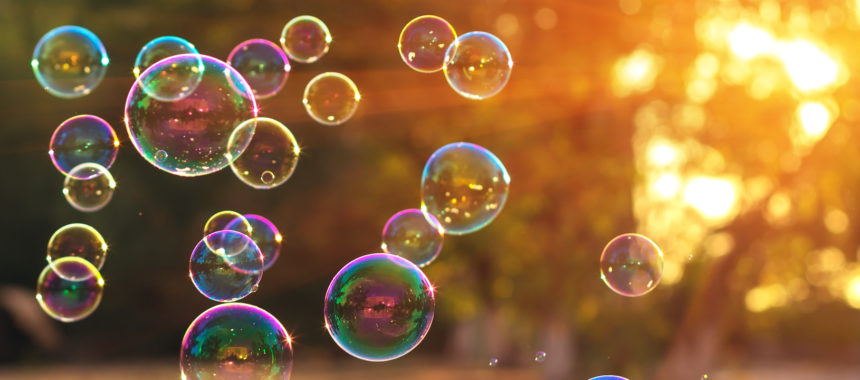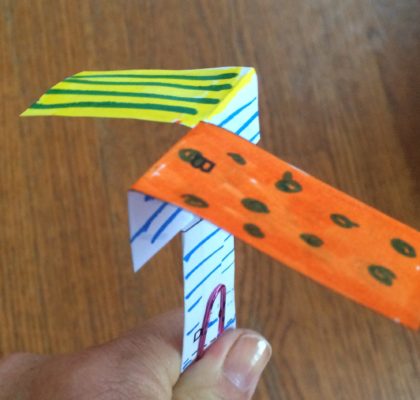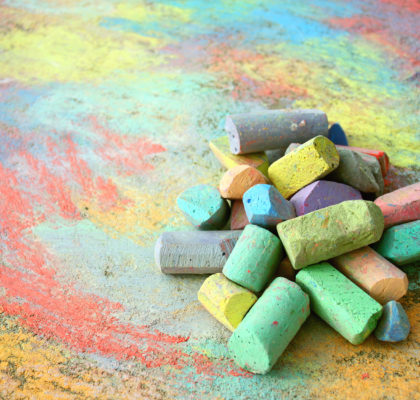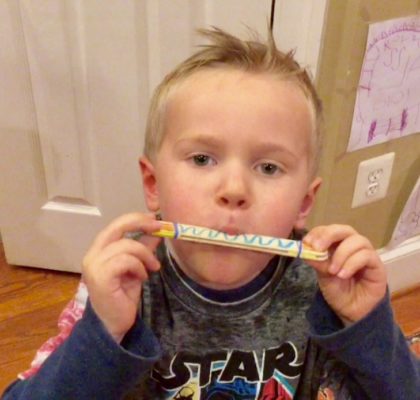
Make Your Own Bubble Formula
In this hands-on science activity, kids experiment with making their own bubble solution and explore the shape and structure of bubbles.
A bubble is a pocket of gas trapped inside a liquid layer. In this activity, air is trapped inside a layer of soap and water. Bubbles form when air is blown into the soapy water, and the water molecules stick together, creating surface tension. The soap helps decrease the surface tension, making the bubbles easier to stretch and form. This is chemistry!
Bubbles eventually pop because the water in the surface evaporates. That's why when you blow bubbles on a rainy day, they last longer -- because there is more moisture in the air. (What do you think would happen on a sunny day? A windy day?) Glycerin and other thickening agents help delay evaporation, making the bubbles last longer.
Bubbles are "minimal surface structures." This means they always hold the gas inside with the least possible surface area. The shape with the least surface area for any given volume is always a sphere. That's why bubbles are always round, even when you blow them through a square wand.
The outside of a bubble actually has three layers: a soapy film layer, followed by water, followed by more soapy film. When you see a rainbow in a bubble, you are seeing the reflection and refraction of light waves through the inner and outer surfaces of the bubble wall.
Safety Notes
Students should not drink the bubble solution or allow the bubbles to pop near their eyes. Should a student get this bubble solution in his or her eye, wash out the eye gently with cool water and seek medical attention if the eye appears irritated.
Materials
- Water - 1/4 cup per student
- Dish soap (Joy or Dawn work best; avoid - 2 tablespoon per student
- Light corn syrup - 1 tablespoon per student
- Plastic bowls - 1 per student
- Spoons - 1 per student
- Bubble wands - 1 per student
- Colorful pipe cleaners - 1 of this item per student
- Measuring cups - class set - 1 total
- Measuring spoons - class set - 1 total
- Pitchers - 5 total
Instructions
On each table, place a pitcher of water, a container of dish soap, and measuring cups and measuring spoons.
Give each student a bowl and spoon. Have students start by measuring out 1/4 cup of water and pouring it into their bowl. Have them add 2 tablespoons of dish soap and stir with their spoon.
Have each student test their concoction using a bubble wand. How big can they blow a bubble? How long does it last in the air? What observations can the students make about the atmosphere in the room and/or the weather outside? Is it hot or cold? Humid or dry? Drafty or still? How might these conditions impact how long the bubble lasts?
Have students add 1 tablespoon of corn syrup to their bubble mixture and stir. Now test this solution. Is there any difference?
Now use colorful pipe cleaners to make bubble wands in different shapes. Can you blow a bubble in a shape other than a sphere? Why not?
Encourage the students to try to catch a bubble on their wand and hold it up to the light. Can they see any rainbows? What might be causing this?
Extensions:
To make an even stronger, sturdier bubble solution, try adding up to 4 tablespoons glycerin (available at most drug stores).
Try experimenting the temperature. What happens when you use warm or hot water? What happens when you use ice water? Do any of the bubbles last longer?
Try experimenting with different brands of dish soap. Do some work better than others?
To extend the activity further, have the students save their solution in a recycled plastic container and create a label for their new bubble product. What would they name their product? How much would they sell it for? Where would they sell it? Who would they sell it to?










